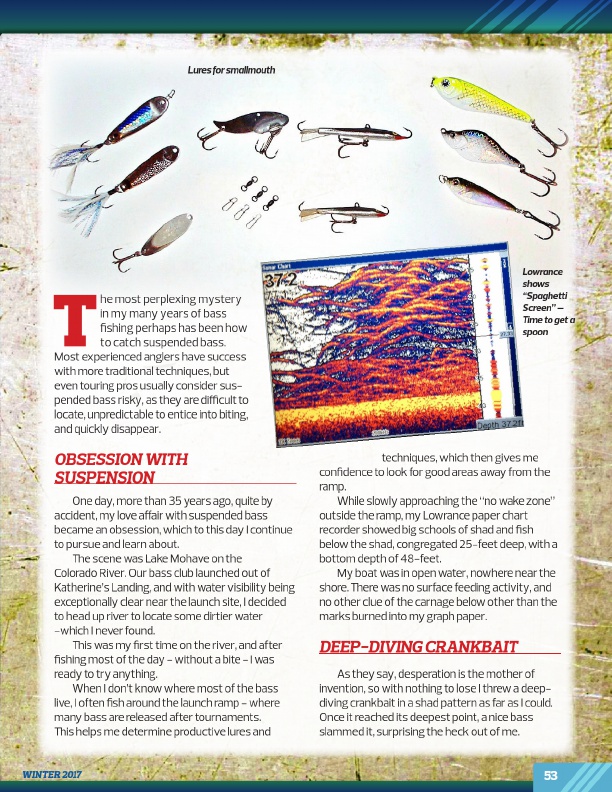
Lures for smallmouth
T
he most perplexing mystery
in my many years of bass
fishing perhaps has been how
to catch suspended bass. Most experienced anglers have success
with more traditional techniques, but
even touring pros usually consider sus-
pended bass risky, as they are difficult to
locate, unpredictable to entice into biting,
and quickly disappear.
OBSESSION WITH SUSPENSION
One day, more than 35 years ago, quite by accident, my love affair with suspended bass became an obsession, which to this day I continue to pursue and learn about.
The scene was Lake Mohave on the Colorado River. Our bass club launched out of Katherine’s Landing, and with water visibility being exceptionally clear near the launch site, I decided to head up river to locate some dirtier water -which I never found.
This was my first time on the river, and after fishing most of the day - without a bite - I was ready to try anything.
When I don’t know where most of the bass live, I often fish around the launch ramp - where many bass are released after tournaments. This helps me determine productive lures and
Lowrance shows “Spaghetti Screen” – Time to get a spoon
techniques, which then gives me confidence to look for good areas away from the ramp.
While slowly approaching the “no wake zone” outside the ramp, my Lowrance paper chart recorder showed big schools of shad and fish below the shad, congregated 25-feet deep, with a bottom depth of 48-feet.
My boat was in open water, nowhere near the shore. There was no surface feeding activity, and no other clue of the carnage below other than the marks burned into my graph paper.
DEEP-DIVING CRANKBAIT
As they say, desperation is the mother of invention, so with nothing to lose I threw a deep- diving crankbait in a shad pattern as far as I could. Once it reached its deepest point, a nice bass slammed it, surprising the heck out of me.
WINTER 2017
53